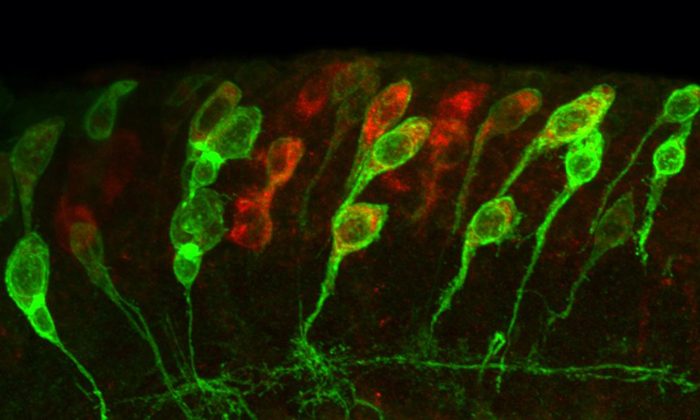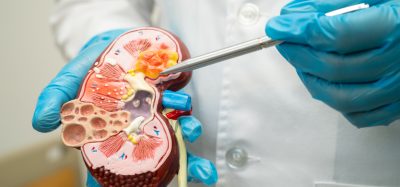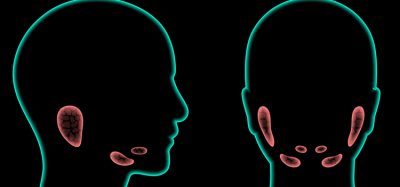Research helps to show how neural stem cells are activated
Posted: 10 June 2019 | Drug Target Review | No comments yet
A new study shows promise for future neural stem cell therapies in replacing cells lost through disease or injury.


A confocal microscope image showing small/ quiescent and enlarged/ reactivating Neural Stem Cells expressing membrane-tagged GFP (green) and the cell cycle marker Cyclin B (red) in the young Drosophila larval brain (credit: Dr. Claudia Barros, University of Plymouth).
Research led by the University of Plymouth helps to shed new light on the mechanisms used by neural stem cells (NSCs) to go from their usual dormant state to one of action. This could pave the way for therapies to speed up the neurons’ and glial cells’ regeneration.
Conducted using Drosophila fruit flies, the study shows that molecules that form a complex called STRIPAK (Striatin-interacting phosphatase and kinase) are essential to promote reactivation in NSCs. STRIPAK is found in organisms from fungi to humans, and the team uncovered it when comparing the genetic messages of dormant and reactivated NSCs in live fly brains.
The researchers then discovered that STRIPAK components act as a switch to turn off dormancy (or quiescence) and turn on reactivation.
“So little is currently known about how neural stem cells coordinate cues to become active and direct the production of more brain cells,” said lead author Dr Claudia Barros, from the Institute of Translational and Stratified Medicine at the University of Plymouth. “This study reveals that STRIPAK molecules are essential to enable reactivation in NSCs, and we are very pleased with the outcomes. But we are only at the beginning. We are working to expand our findings and bring us closer to the day when human neural stem cells can be controlled and efficiently used to facilitate brain damage repair, or even prevent brain cancer growth that is fuelled by stem-like cells.”
The full study, ‘STRIPAK Members Orchestrate Hippo and Insulin Receptor Signaling to Promote Neural Stem Cell Reactivation’, is available to view now in the journal Cell Reports.
Related topics
Cell Cultures, Regenerative Medicine, Research & Development, Stem Cells
Related conditions
Brain cancer
Related organisations
University of Plymouth
Related people
Dr Claudia Barros








